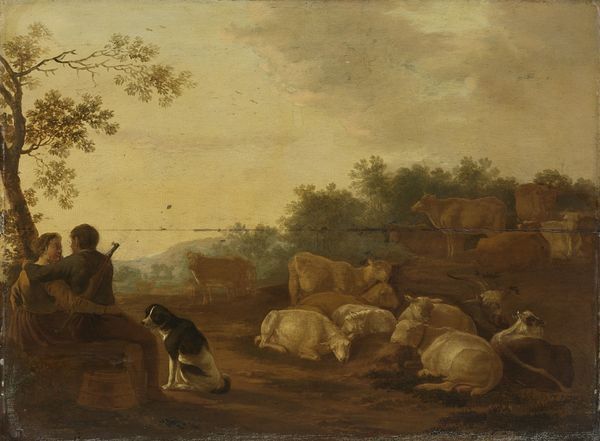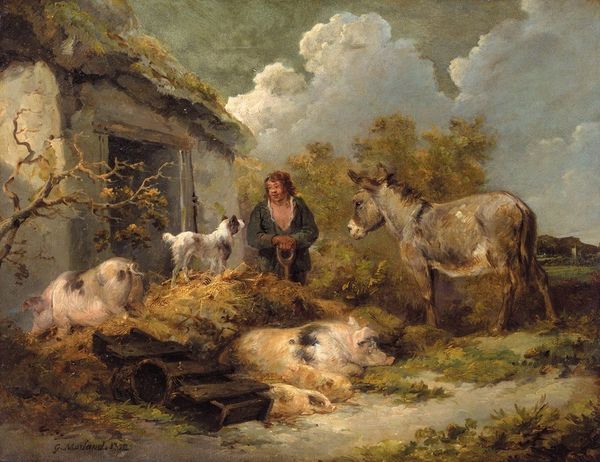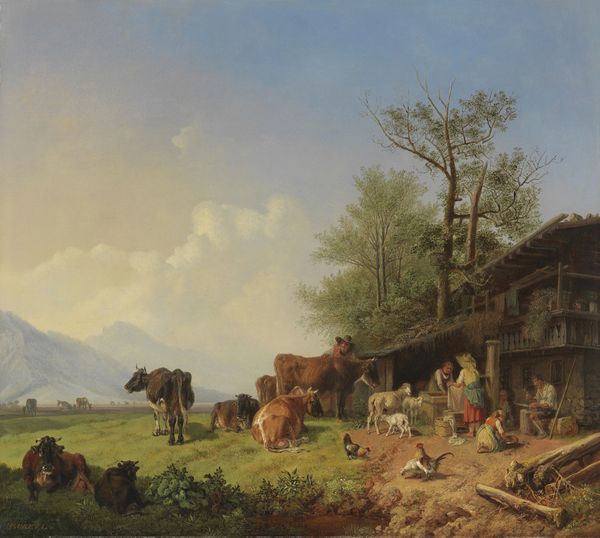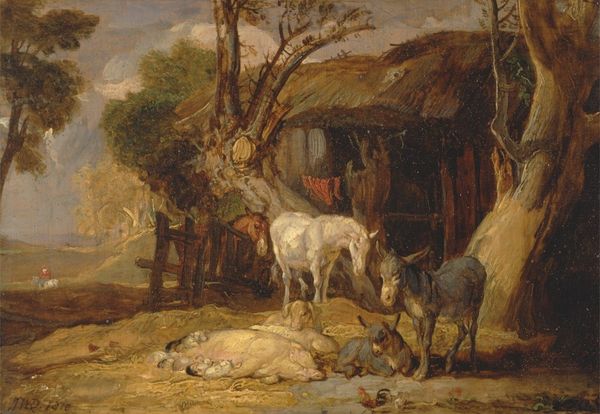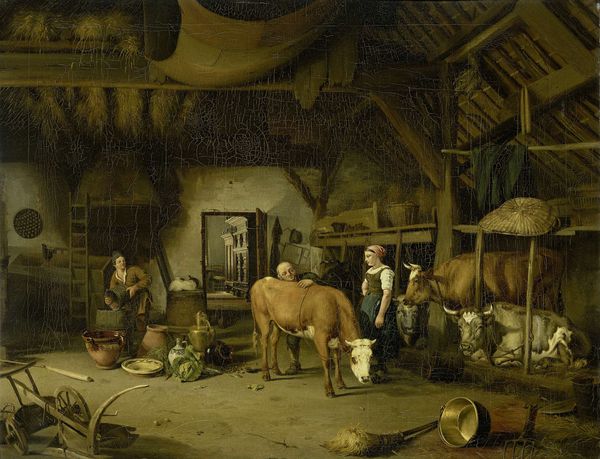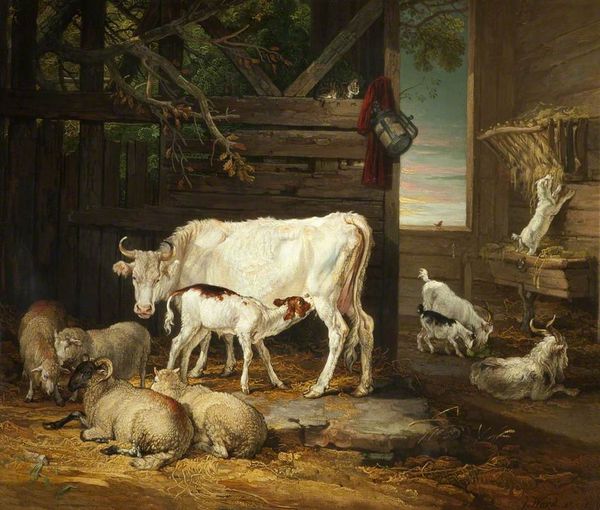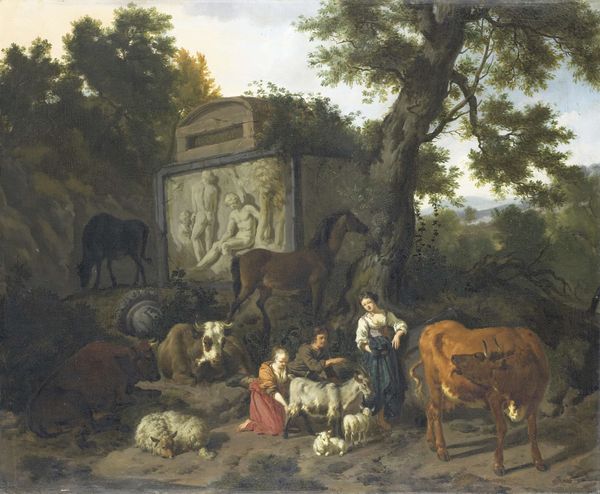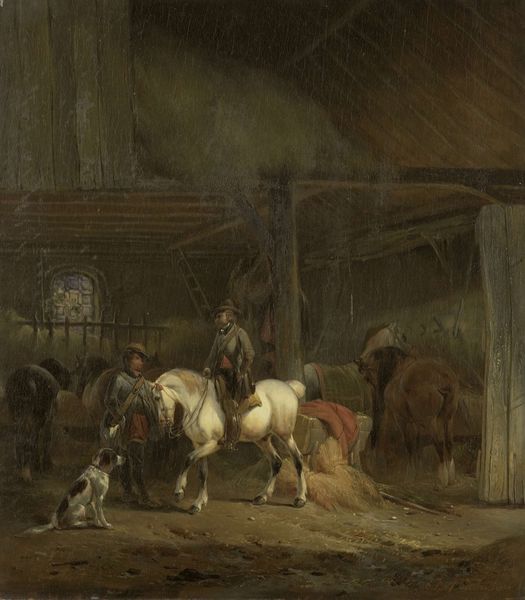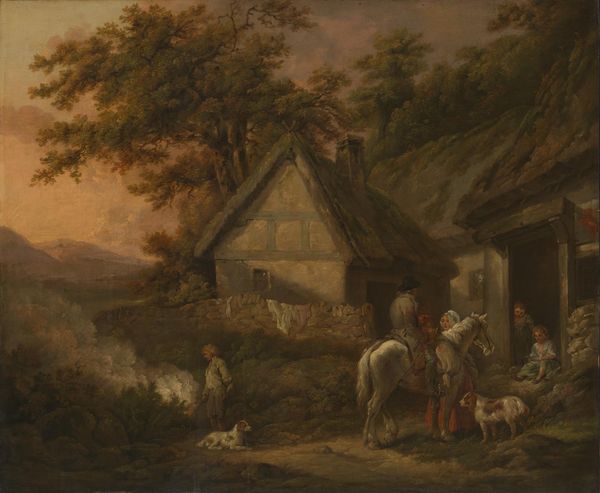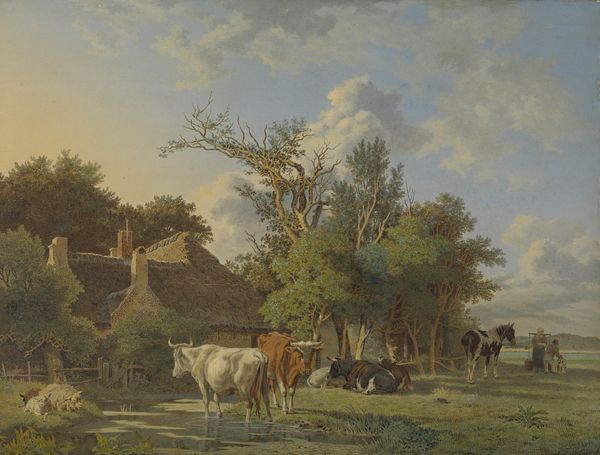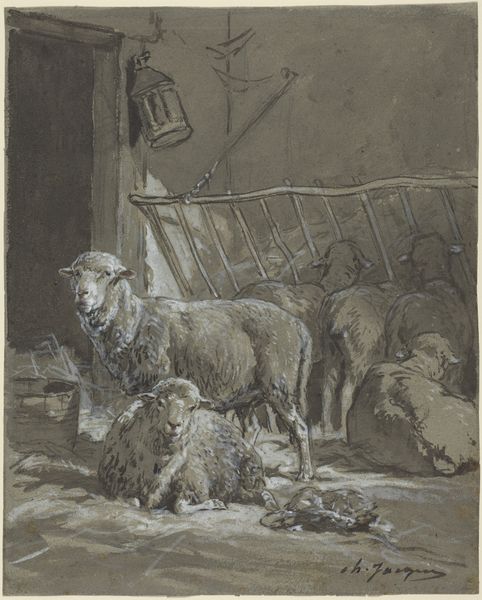
painting, oil-paint
#
painting
#
oil-paint
#
landscape
#
romanticism
#
genre-painting
Dimensions: height 66.5 cm, width 79.2 cm, thickness 3 cm, depth 11 cm
Copyright: Rijks Museum: Open Domain
Curator: Immediately, there is a sense of profound stillness about this scene. A gentle hush pervades even through the representation. Editor: And that stillness is sharply contrasted with the lively scene that Dutch artist Jan van Ravenswaay depicts in his 1821 oil on canvas titled "Sheep and Goats in a Stable." This quiet drama invites us to consider rural life and its inhabitants within a broader context. Curator: I think there is so much more going on beyond genre here. Beyond the straightforward portrayal of labor. Notice how light plays such a crucial role here: that threshold to the outside world filled with luminosity. To me it calls back to the Genesis story with the separation between light and dark. It speaks of beginnings, renewal... Editor: Interesting take! I'd agree with the idea of renewal here and what that might imply about social relations in Ravenswaay’s time. If we see this artwork as offering an idealization of the Dutch countryside, perhaps it expresses longings for an alternative way of organizing social life against a backdrop of burgeoning urbanization. I want to dig in more to what this scene implies. The stable, the labor performed, the relationship between humans and animals... How did labor operate here, and what dynamics and power relations are present or intentionally glossed over? Curator: But even just considering the iconography, note the presence of both sheep and goats together. These animals are rich in biblical connotations – sacrifice, the flock, but also sin and salvation. How does this dualistic imagery interplay with the naturalistic portrayal of these animals? Editor: I think you’re on to something, especially considering the way Ravenswaay presents this “naturalistic portrayal.” There’s definitely a romantic idealization at play. But these idealized rural settings have long functioned to erase historical and contemporary power dynamics between humans and animals, and of course among humans as well, when considering those who performed the labor in these rural contexts. Curator: The painting is definitely multilayered then – operating on various symbolic and cultural registers at once. This adds so much complexity. Editor: Precisely. And examining those layers, even those meant to stay hidden, gives the image contemporary resonance and force.
Comments
No comments
Be the first to comment and join the conversation on the ultimate creative platform.


